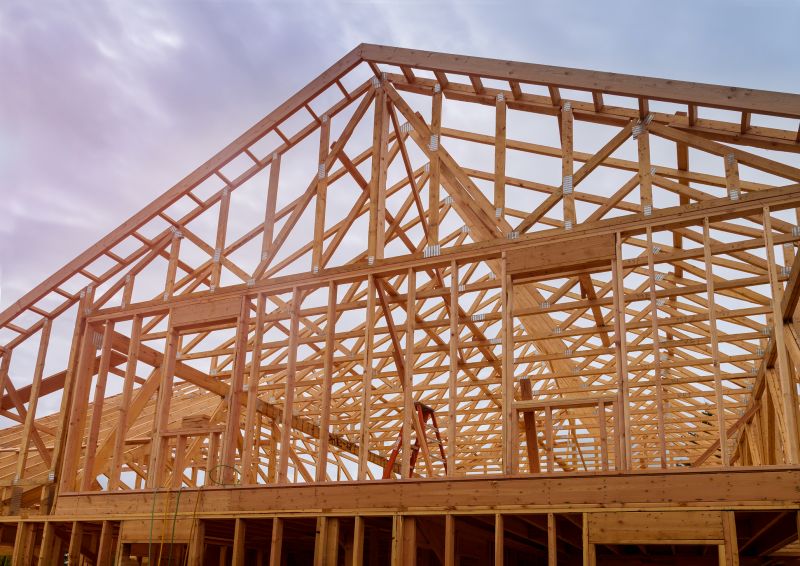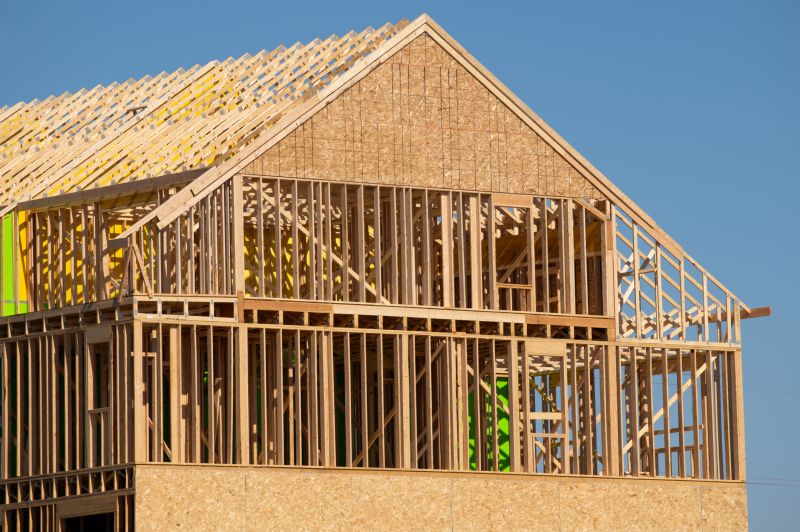Innovative Roof Framing Techniques for Complex Designs
Roof framing is a critical component of building construction, providing the structural support for the roof system. Proper framing ensures durability, stability, and safety of the roof structure, accommodating various roof designs and materials.

Traditional wooden roof framing offers flexibility and ease of installation, suitable for many residential projects.

Steel framing provides strength and longevity, ideal for large commercial buildings.

Truss systems distribute weight efficiently, supporting complex roof designs.
Common types include rafters, trusses, and purlins, each suited for different architectural needs.
Materials range from wood and steel to engineered products, chosen based on load requirements and design.
Factors such as span, load, climate, and aesthetic preferences influence framing choices.
| Aspect | Details |
|---|---|
| Material Options | Wood, steel, engineered products |
| Common Types | Rafters, trusses, purlins |
| Load Capacity | Varies based on material and design |
| Installation Time | Depends on complexity and scale |
| Cost Factors | Material, design, labor |
| Durability | Steel offers longer lifespan, wood varies |
| Design Flexibility | Trusses enable complex roof shapes |
| Maintenance | Steel requires less upkeep than wood |
Late November and early December present an advantageous time to explore roofing projects, as many contractors offer discounts around Black Friday and holiday periods. It is common to inquire about potential discounts during this season, which can lead to cost savings on roof framing services.

Construction sites showcasing ongoing roof framing work.

Engineered steel trusses installed for commercial roofing.

Traditional wooden rafters forming part of residential roofs.
Those interested in obtaining a quote for roof framing services are encouraged to fill out the contact form. Providing detailed project information helps facilitate accurate estimates and timely responses.



